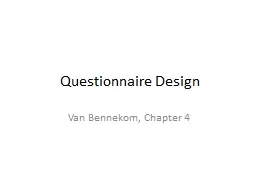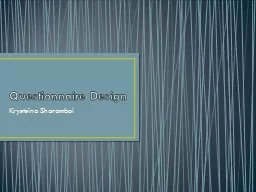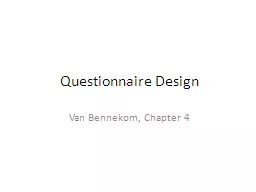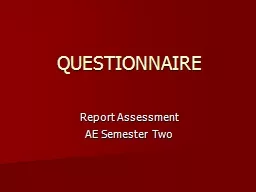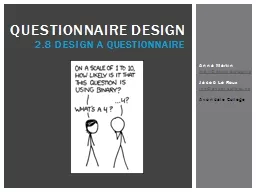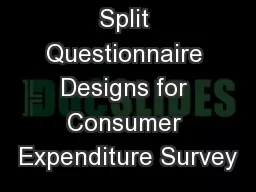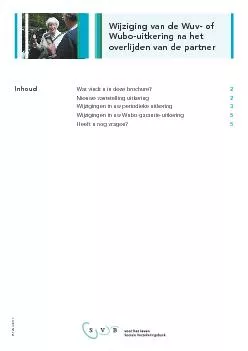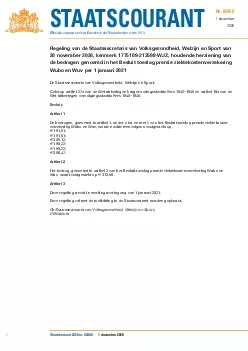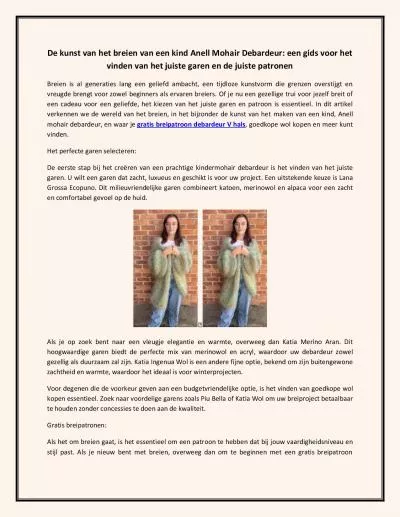PPT-Questionnaire Design Van
Author : trish-goza | Published Date : 2018-02-22
Bennekom Chapter 4 Identifying the questions to ask What are concerns and interests from your evaluation U pstream shareholders Eg monitor service quality to avoid
Presentation Embed Code
Download Presentation
Download Presentation The PPT/PDF document "Questionnaire Design Van" is the property of its rightful owner. Permission is granted to download and print the materials on this website for personal, non-commercial use only, and to display it on your personal computer provided you do not modify the materials and that you retain all copyright notices contained in the materials. By downloading content from our website, you accept the terms of this agreement.
Questionnaire Design Van: Transcript
Download Rules Of Document
"Questionnaire Design Van"The content belongs to its owner. You may download and print it for personal use, without modification, and keep all copyright notices. By downloading, you agree to these terms.
Related Documents

